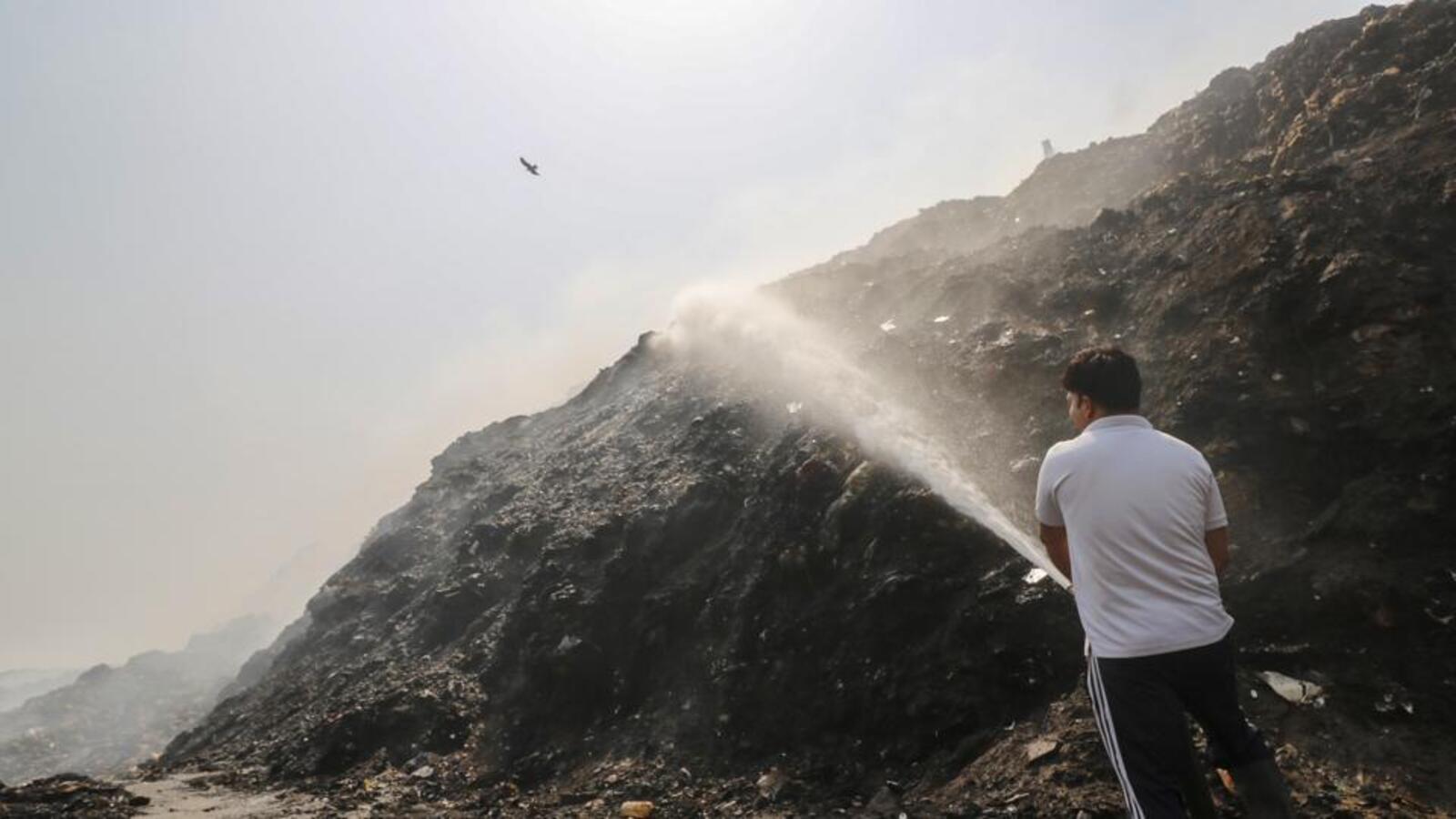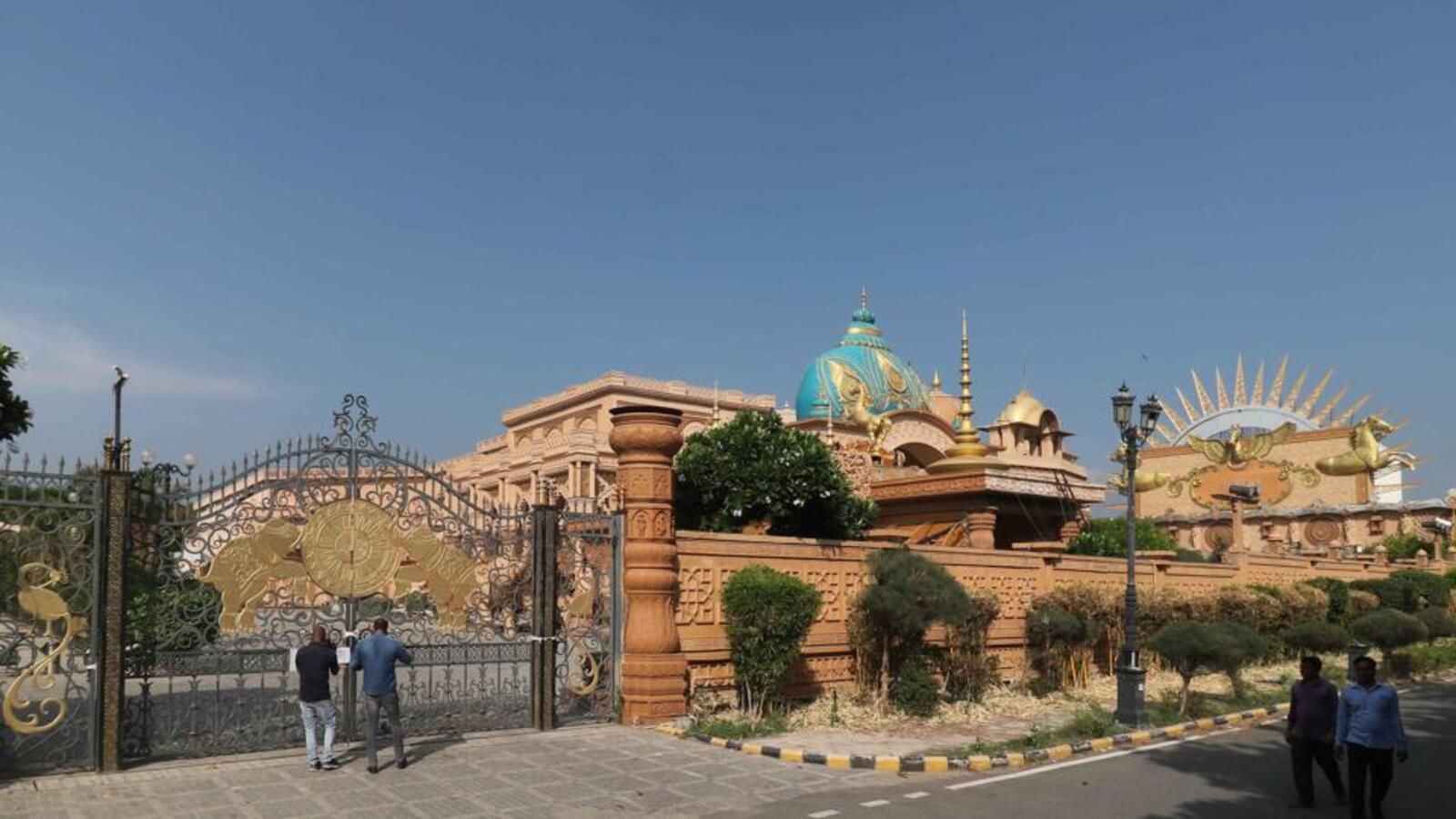In the wake of repeated forest fires, rampant illegal dumping, and unchecked environmental destruction across the Aravallis, citizen groups and environmentalists have intensified calls for the urgent formation of an Aravalli Protection Force. Their demand gained fresh urgency after devastating fires on Saturday gutted more than 70 acres of forest land across the Gurugram-Faridabad belt, threatening critical wildlife corridors supporting at least 32 leopards, according to the Wildlife Institute of India’s 2017 report.

Following the incidents, environmentalists met Haryana forest minister Rao Narbir Singh on Sunday and apprised him of the situation. Singh agreed to call a meeting with concerned officials and committed to restarting the long-pending Aravalli Task Force, activists said.
“This is the prime concern, and we will set up a new and active committee in May,” Singh said. “I will form a team of forest and wildlife department officialsto conduct a survey and submit a report based on which the Aravalli Task Force will be formed. The team will be responsible for any damage, illegal mining or any loss to wildlife,” they added.
Earlier on April 15, the crisis deepened after central empowered committee (CEC) report to the Supreme Court indicted local officials for serious environmental violations in Nuh district. The report revealed that a 1.5-kilometre illegal road had been brazenly constructed through Basai Meo village using heavy machinery, cutting through notified forest and agricultural lands without mandatory clearances under the Forest (Conservation) Act, 1980, and the Punjab Land Preservation Act, 1900.
The CEC found that the road not only destroyed decades-old Aravalli plantations but also critically disrupted wildlife corridors, endangering leopard habitats. The report cited a “non-cooperative attitude” by senior revenue officials in Nuh, noting their repeated absence from meetings convened to discuss the violations. It indicated possible collusion between local political figures, government authorities, and mining mafias.
Additionally, the CEC recommended disciplinary action against the Nuh District Magistrate, an independent vigilance inquiry into officials involved, immediate reforestation using native species, and making the illegal road non-motorable. It also proposed satellite-based real-time surveillance to monitor future encroachments.
Nuh deputy commissioner Vishram Kumar Meena said that, acting on complaints from Basai, the administration deployed three enforcement teams comprising officials from the forest, excise, mining, and police departments at strategic checkpoints by March-end.
“No major illegal mining incidents have been reported recently along the Basai route, but vigilance remains high,” Meena said. He added that the deputy commissioner of Alwar (Rajasthan) had visited Nuh earlier this month to coordinate cross-border enforcement. Acknowledging staff shortages across enforcement departments, Meena said efforts were underway to strengthen teams and plug monitoring gaps.
However, environmentalists argue that enforcement remains largely reactive and insufficient. Vaishali Rana, an environmental activist, stressed that the absence of check-posts and a shortfall of over 600 forest guards were severely hampering enforcement.
“Hiring retired army personnel or home guards, as earlier suggested, could temporarily bridge this gap,” Rana said. She also advocated involving local villagers as first responders to report illegal activities in real time.
“The fires and illegal waste dumping are not isolated incidents. They are symptoms of systemic neglect, corruption, and lack of political will to protect the Aravallis,” said Ruchika Sethi Takkar, founder of Citizens for Clean Air. “The Aravalli Protection Force is not just an idea — it’s a necessity if we are serious about saving the last green lungs of NCR,” she added.
“Without a specialized force solely focused on Aravalli protection, enforcement will always remain fragmented and ineffective,” said Roma J. Vinayak, an environmental activist.
Despite administrative claims, illegal dumping of construction debris and municipal waste continues unabated across Gurugram’s Gairatpur Bas, Bandhwari, Mangar, and Tauru areas, according to conservationists. They alleged that private contractors have been openly using forest land for dumping activities without facing stringent punitive action, further damaging the fragile ecosystem.
Separately, a Haryana mining department survey recently found fresh signs of illegal stone quarrying in Nuh’s Rava village. Officials estimated that about 6,000 metric tonnes of stones were mined, and a hillock in Rava was blasted apart on the night of December 19.
The Supreme Court is scheduled to hear the matter on Tuesday, when the Haryana government will have to respond to the CEC’s findings and present concrete steps to restore damaged forests, punish those responsible, and protect the remaining Aravalli stretches.












Leave a Reply